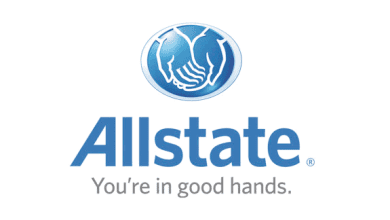Figuring Out What Percentage of Employee Premiums To Cover
Employees love quality health insurance coverage since it offers protection and peace of mind. It is also a benefit for employers, as it helps them recruit top-tier talent and boost productivity. Healthier employees make good business sense all around. If you’re an employer, consulting with a health insurance broker in Santa Rosa can get you on track to offering group coverage. However, one question may be what percentage of your employees’ premiums to cover.
Patterns in Business Size and Individual or Family Coverage
In California, about
47% of the population has some type of employer-sponsored health insurance coverage. These employers take a few possible approaches.
For example, when it comes to individual and family premiums, a business could opt to cover 100% of individual premiums while asking employees to contribute to family premiums. The Kaiser Family Foundation outlines a few important stats:
- About 29% of small-business employees with coverage through their employer have 100% employer coverage for individual premiums.
- The percentage for 100% individual premiums coverage falls to 5% for larger companies.
- In small businesses, about 31% of employees with coverage pay more than 50% of their family health plan premiums.
- In larger companies, just 5% of employees pay more than 50% of their family health plan premiums.
In other words, if you run a small business, it would be fairly common for you to 100% cover employees’ individual premiums. If they opted for family plans, you’d probably need them to contribute a somewhat significant chunk of premiums, perhaps more than half. About 4.2 million small businesses operate in California and employ about
47.9% of California employees.
Types of Employer Contributions
Employer-sponsored plans follow three main models for premium costs: fully funded, cost-sharing, and defined contribution. In the fully funded model, employers cover 100% of the premiums. Employees make no direct contributions.
In cost sharing, both the employer and employee share the costs. Usually, the employee pays the larger percentage through the form of payroll deductions.
With defined contribution plans, employers give a fixed dollar amount for employees’ premiums. Employees choose their health insurance plans with this fixed amount in mind. Any costs they incur beyond the employer’s contribution are their responsibility.
Factors That Businesses Can Use To Determine Percentage
Health insurance plans can vary widely. The percentage that you, as an employer, pay for premiums can depend on factors such as these.
- Company industry and size
- The specific plan the employees choose
- The tier or level employees choose
Size of Company and the Type of Industry
The larger your business, the more negotiating power you may have to get lower premiums. Smaller companies with fewer resources may choose to offer relatively basic plans. These plans might have fairly low premiums that employers can afford, especially for individual coverage. For employees, basic plans may come with downsides such as higher deductibles and copayments.
However, a health insurance broker in Santa Rosa can walk you through these nuances and give you
options for group health insurance. As for the type of industry, specific plans may be available in some sectors.
Plan Type
PPOs (preferred provider organizations) tend to be more flexible with more provider options. They can be more expensive, so employers might not cover as much of the premium. HMOs (health maintenance organizations) may have limited provider networks and mandate specialist referrals. They may be less expensive, and employers might be more inclined to cover a larger percentage of these premiums.
A single employer can offer both HMOs and PPOs as well as other plan types such as HDHPs (high deductible health plans). Multiple types of plans are less likely with very small employers.
Plan Tier or Level
Gold-tier plans may have higher premium costs. Accordingly, employers might not cover these premiums percentage-wise to the extent they would a bronze or silver plan. Bronze-level plans are more likely to have less coverage and more cost-sharing. Employees should choose their plan and tier carefully, keeping in mind their healthcare needs.
Common Pros and Cons of Employer-Sponsored Group Health Insurance
Offering group health insurance as an employer offers many benefits. For instance, it increases your odds of getting qualified, motivated employees. Good coverage can also mean healthier employees who appreciate their job. Employer contributions may be tax deductible as business expenses, too.
However, rising health costs can strain employers’ budgets. It can be tricky to make sure plans meet regulatory requirements, too, and employees may expect a great deal from their employers and insurance plans.
Contact a Health Insurance Broker in Santa Rosa
A health insurance broker in Santa Rosa can help your company find affordable plans and make informed choices.
Contact Sackett Insurance today.

